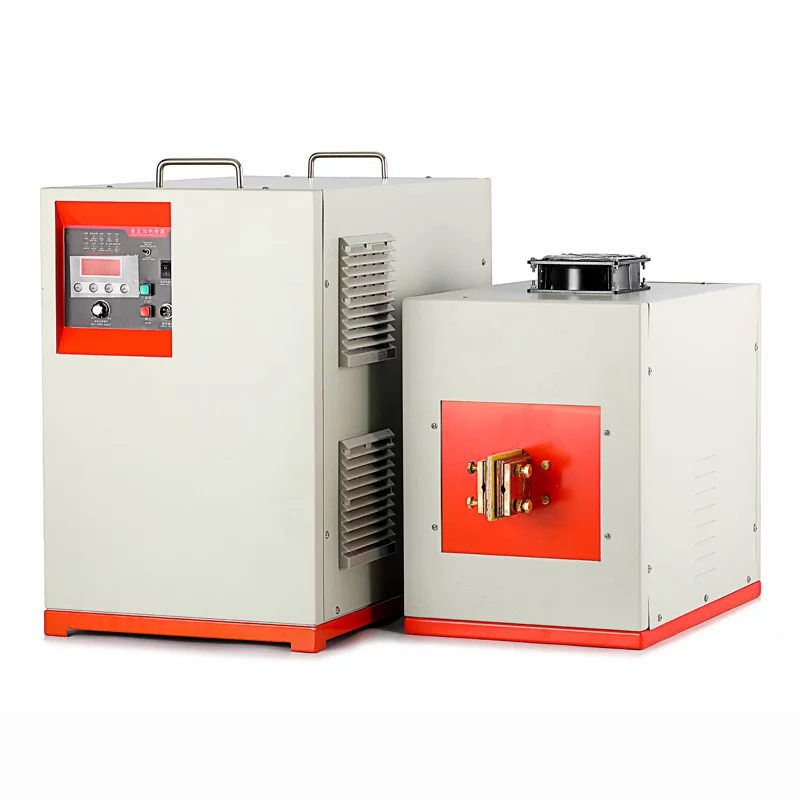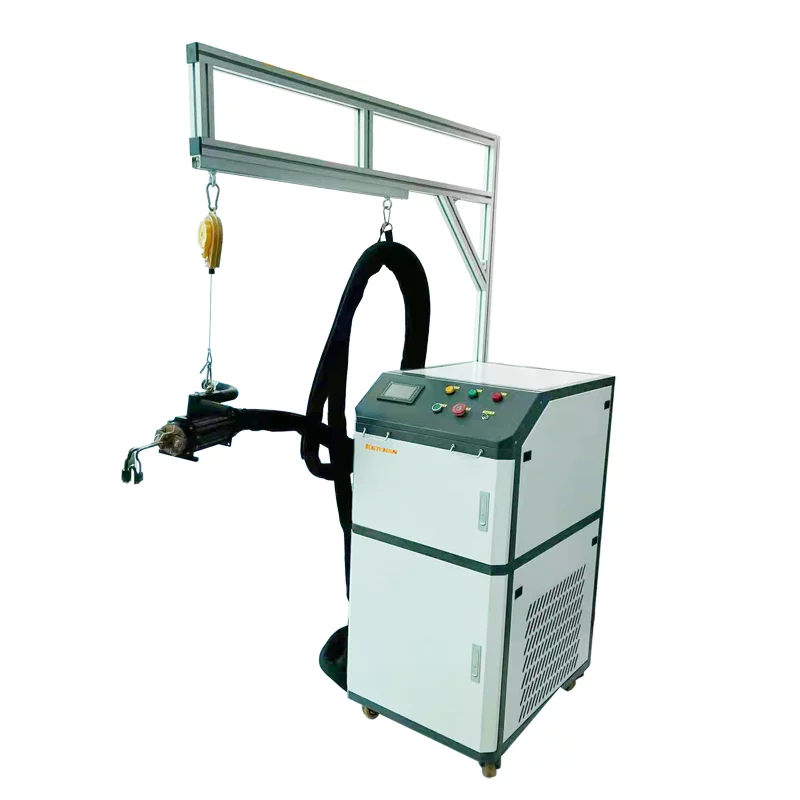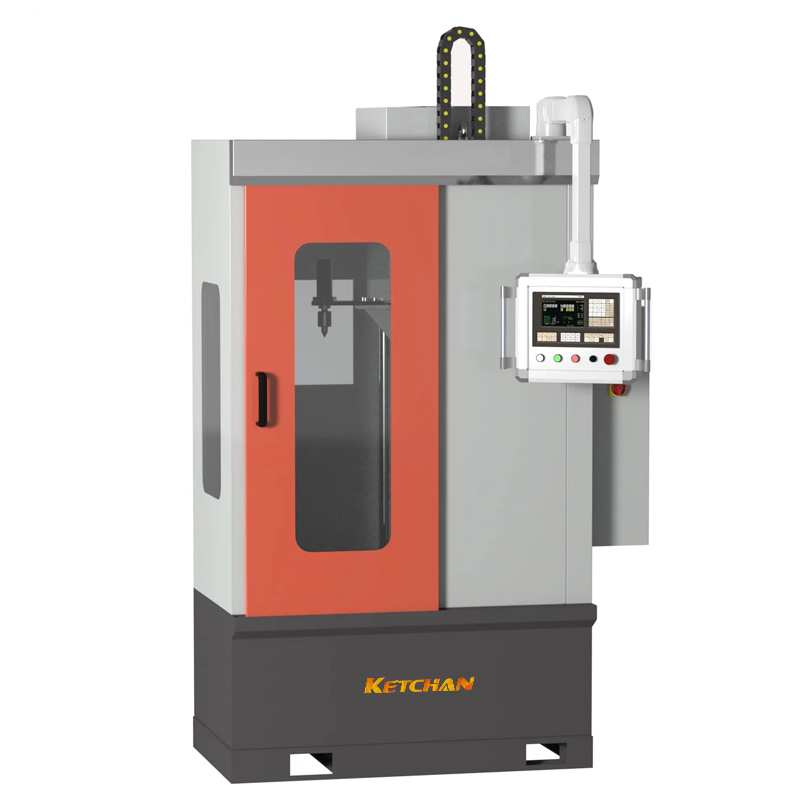Induction hardening and carburizing quenching belong to the surface hardening process, in the early 1950 s, the former Soviet union scholar is pointed out that “the 1/3 of the cost of induction hardening for carburizing and quenching, then put forward: the high frequency current hardening process with short heating time, small scale, less deformation, the working environment clean, can online production and a series of advantages.”
However, up to now, the carburized quenching process is still widely used in the production of small and medium modulus gear and other fields. The reason is the carburized parts surface carbon concentration is high, wear resistance is better, simple fixture and small parts, batch loading furnace convenient and other factors. Induction hardening needs special induction coils, tooling, such as management fees are comparatively high, general electric (ge), a German research institute of the big inner hole carburizing and induction quenching of single detailed comparison between the total cost of carburized materials plus 39 working procedure processing fee of 14.73 points, and induction hardening a 28 process relative cost is 12.73. The difference in cost per unit is 2 cents.
Induction hardening for complex shape of the workpiece contour quenching with difficulty, small hole, blind hole bottom, chuck claw ladder, the piston groove, such as pieces of curved surface parts, not as good as carburizing process is simple, therefore, when choosing surface hardening process, from equipment, materials, processes, such as product life make concrete analysis to determine, not only from energy saving point to select.
Carburizing and induction hardening have made great progress in the research and development of technology and equipment in recent years. The advantages of the induction quenching process can be listed as follows:
1. Deep carburizing
The depth of carburized layer of gear is related to its modulus, and the depth of the layer is usually (0.15 ~ 0.20) m. For medium and small module gear, this value is in 0.2 ~ 1.0 mm, generally carburizing process can achieve, but the big modulus gear, such as m = 80 gear (see figure 1) and m = 63 racks, etc., and its deep layer requirements often 4 mm or more, such as using carburizing, it must be deep carburizing, carburizing cycle is not less than 100 h, only more regardless of the length of the rack dozens of meters of furnace charging equipment requirements, hardening and induction hardening is single tooth scan, from the power supply capacity and the lifting mechanism into consideration is much more simple.
FIG. 1 M =80 gear single tooth scan quenching (Russian Journal of Induction Heating)
Another foreign example is the inner hole of metallurgical equipment, where deep carburizing is replaced by induction hardening, as shown in Figure 2.
FIG. 2 Induction hardening for parts of metallurgical equipment (FLUXTROL, USA)
Workpiece 2. Hardened layer 3. Inductor 4. Magnetic conductor 5. Coil introduction 6.Liquid spray device
2. Small aspects of distortion
Carburizing gear is the overall heating, long time, high temperature, so quenching distortion, some gears need to die quenching to solve the problem, therefore, its long cycle, power consumption, high cost, induction quenching is relatively favorable, domestic enterprises have successfully changed the carburizing inner gear ring to induction quenching for production examples. But so far there are also slurry pump cylinder sleeve parts that are still used carburizing quenching (carburizing layer 2.75 ~ 3.0mm).
3. Induction hardening is advantaged for large parts and long parts
Nowadays wind power develops rapidly, wind motor’s turning support needs to be quenched in raceway, induction quenching is undoubtedly the best process, the heat treatment of machine guide surface, oil pipe, railway rail, etc., has proved that induction quenching has unique advantages.
4. Low hardenability steel induction hardening and carburizing gear quenching
The invention of the Soviet union low hardenability steel induction hardening, as early as the country’s track and bearing on the application of it from limiting steel hardenability make gear tooth profile and regulations of the hardening layer hardness of heart, now still increasing low quenching steel varieties, besides 58 steel, and expand to 60 П П, 80 П П such as brand, with larger economic benefit.
Russia, hamas’ car factory since 2005, low quenching steel production are: 58 steel (Г О T1050 C – 88) is 54 П П, 60 П П steel, it is chemical composition: wC = 0.5% ~ 0.65%, wMn = 0. % l ~ 0. 3%, wSi = 0. % l ~ 0. 3%, wCr, wNi, wCu<0. 25%, the austenite grains of low-quenched steel (Grade I0 ~ 1-2) have good comprehensive mechanical properties after the whole heating and quenching. The factory experience, when the steel of Mn, Si, Cr, Cu were more than 0, 2%, the total reached 0. 5%, the number of different ideal critical deviations will reach 10 ~ 15 mm diameter D (Г OCT technology conditions for 10 ~ 14 mm). Russian hill soft metallurgy factory (Ч У С В К O й C O M E T A JI JI У P Г И Ч Е С К И Й З А В О Д) low production of the second generation of hardened steel, the scope of its hardenability narrower and more stable.D criticality was 8 ~ 10mm, 10 ~ 12mm, and 12 ~ 14mm. Under the condition of induction heating, the grain size can reach 11 ~ 12 grades; under the condition of furnace heating, the grain size is 10 ~ 11 grades; its hardenability is less sensitive to the heating temperature.
In steel mills, lower than the cost of 45 steel quenching steel (Г О С Т 1050-88), 5% ~ 10% lower. The plant of the second generation low quenching steel results are obtained: rear axle gear in a total of 5 kinds of gear, rear axle cylindrical gears and bevel gear pair (including master-slave dynamic driving gear of gear and tin) using 60 П П with 80 П П steel instead of mass production of carburizing steel 20 Х Г HTMA steel.Gear ring and the main, driven cylindrical gear, with 2. 4 kHz overall heating medium frequency power supply, with high-pressure pump 6 h Д B spray cooling, the rest three gears out of economic considerations, in the chamber furnace heating and cooling on the spray quenching device.Schedule for 60 П П, 80 П П gear steel after quenching layer hardness, depth, and microstructure.
60 П П, 80 П П gear steel after quenching layer hardness, depth and microstructure:
In addition, the plant with low quenching steel ball head pin (60 П П, 80 П П), piston pin (80 П П) and kingpin (60 П П) to test and its related data layer hardness, depth, microstructure, and schedule are basically identical. This factory carries on the research and development additionally is the simple car spring plate, after adopting the new technology, the component weight can reduce 30%, the service life will extend 1.5 times, and the cost reduces 20% above. The pin sleeve of construction machinery parts needs to be hardened both inside and outside. If low quenched steel is used, it should have a good prospect and benefit.
5. SDF synchronous double frequency gear quenching
It with different modulus, high in the gear by two kinds of frequency selection, can get a copy of tooth profile, the distribution of the hardening layer because of the large power density, short heating time (in seconds) one over ten, so the high equipment investment, which compared with the performance of carburized gear, gear data, has not been reported and, therefore, in the domestic is in the stage of waiting for promotion.
6. Automobile and construction machinery
The most typical parts are the camshaft from carburizing to induction hardening, CVJ bell shell, and other parts after the material carbon mass fraction increased, now have been used induction quenching.
Carburizing and induction hardening in the field of surface hardening, each has its own advantages, the use of which process is better should be determined by specific analysis. Induction hardening has more advantages in terms of equipment, production cycle, and processing cost in terms of deep hardening, part distortion, extra large and extra long parts surface hardening, etc.








